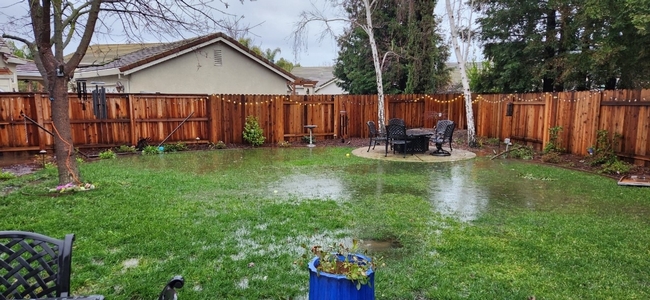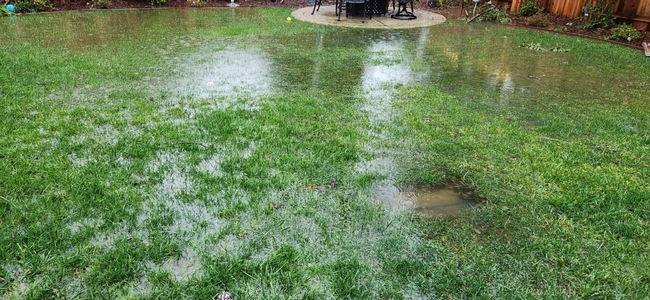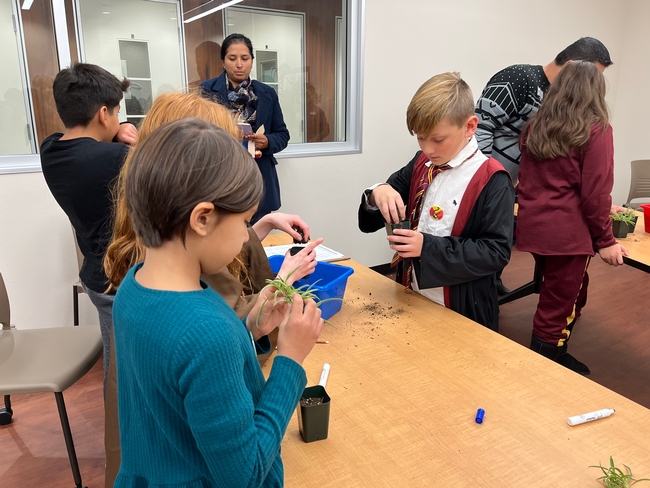- Author: Melissa G. Womack
- Author: Missy Gable
[From the UC Master Gardener Program Statewide Blog]
Proper irrigation and drainage are critically important for the health of plants and trees. But what happens when Mother Nature throws an atmospheric river curveball, and your yard or garden is now under water from heavy rains or floods?
Good garden soil contains a network of pore spaces filled with water and air. Both are necessary for healthy roots and beneficial soil-dwelling organisms. When the pore spaces fill with water, air is no longer available to the root system, and the roots become susceptible to root-rot organisms. Understanding the effects of flooding on plant health and caring for them after a flood event is important to saving your plants and garden.
Once the floodwaters have receded, assess the damage to your garden and begin the recovery process. There are a few things you can do to minimize the damage to your plants from flooding:
- Remove any debris, such as mud and silt, that may have shifted and accumulated on your plants.
- If the soil is waterlogged, improve drainage by digging ditches or furrows to redirect water away from plants.
- Check the soil for compaction and loosen it up with a garden fork. This will help to improve drainage and make it easier for water and nutrients to reach the roots of your plants.
- Wait until the soil dries out before working with it in order to reduce additional compaction. Avoid walking on waterlogged soil to prevent compaction and further root damage. Stay off a boggy lawn!
- Inspect your plants for damage to the roots, leaves, and stems. Remove any damaged parts, and prune your plants back to healthy growth if necessary.
- Remove contaminated material. Consider that any garden produce touched by floodwater may be contaminated and discard it. While the risk of contamination is low in residential areas, runoff from septic systems, pastures, or industrial areas can carry potentially harmful microbes and chemicals.
- Monitor your plants closely for signs of stress, such as wilting or discoloration, and address any issues that arise as soon as possible.
- Once dry, start to water your plants gently and gradually to help them acclimate to the new soil conditions.
Connect with us!
Recovering from a flood can be a difficult and time-consuming process, but with proper care and attention, your garden can recover and thrive. The UC Master Gardener Program is available to help! For gardening questions and local county resources, click here to Find a Program. You will be redirected to your local county website and contact information.
Source: Flood: Plant Stress in Extreme Wet Conditions, https://marinmg.ucanr.edu/PROBLEMS/EXTREME_CONDITIONS/Flood/
- Author: Anne Schellman
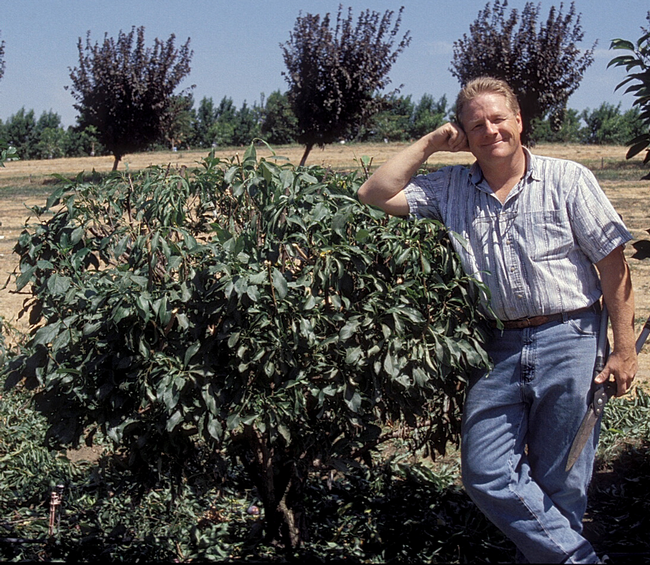
What is a Deciduous Fruit tree?
Deciduous fruit trees lose their leaves in fall, and include apple, pear, fig, pomegranate, nectarine, cherry, apricot, peach, and plum.
Planting New Trees & Understanding Where Fruit Originates
Sometimes a fruit tree mysteriously dies, and the gardener isn't sure what happened. A common cause is a tree that was planted too deeply. Root and crown rot slowly affect the tree, causing it to die years later. Watch the detailed instructions on how to plant correctly.
It's important to understand how new fruit develops and grows on the tree. Not all deciduous fruit trees produce fruit in the same place. It's important to know this so you don't accidentally cut off fruit spurs and damage your tree's ability to produce fruit. See this video for guidance. https://www.youtube.com/watch?v=-4fgVrf8XHE&t=250s
Publication - Fruit Trees: Planting and Care of Young Trees https://anrcatalog.ucanr.edu/Details.aspx?itemNo=8048
Fruit Trees: Training and Pruning Deciduous Trees https://anrcatalog.ucanr.edu/Details.aspx?itemNo=8057
Keeping New Trees Small – the Fruit Bush Method
Tired of out-of-control fruit trees? If you are planting a new tree, watch this video! It details the Fruit Bush Method, a specific way of keeping fruit trees small. See photos of 5-6' tall fruit trees planted over 30 years ago that continue to produce an ample amount of fruit. https://www.youtube.com/watch?v=ry4YAp6NzdI&t=1s
Pruning Established Trees
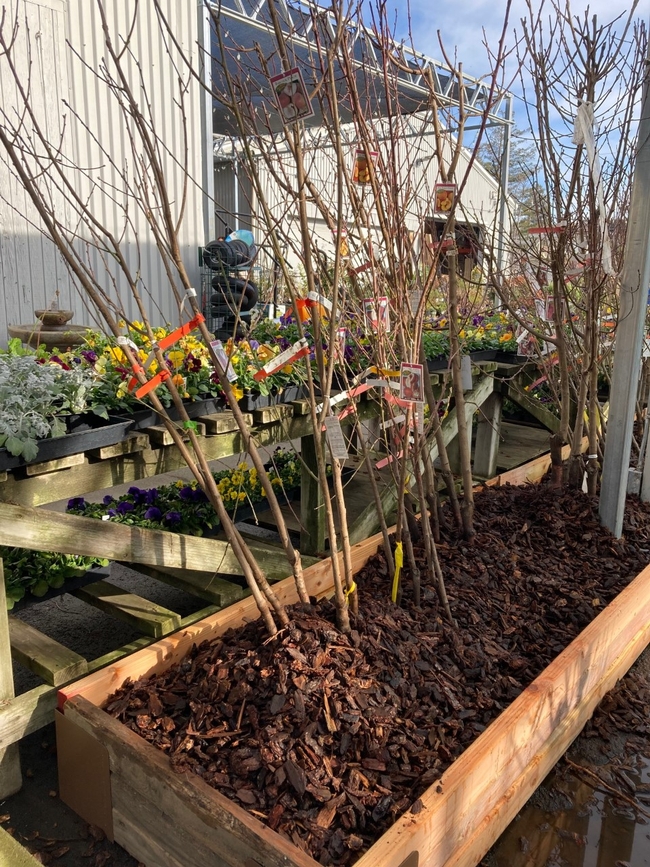
Other Helpful Publications
Fruit Trees: Thinning Young Fruit https://anrcatalog.ucanr.edu/Details.aspx?itemNo=8047
What about Citrus Trees?
Citrus trees such as oranges, lemons, grapefruits, lime, and kumquats are evergreen trees and need different care than deciduous trees. It's not recommended to prune citrus trees at the same time as deciduous fruit trees. Wait until spring to prune your tree for size and shape.
We are offering an online class on citrus on January 31, so watch for our registration advertisement in about a week. Locally, we will be teaching at 8 library locations about citrus during March.
- Author: Ed Perry
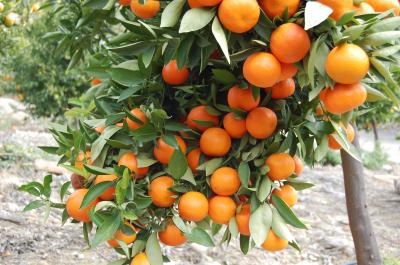
Fruit color is a poor indication of ripeness, because many fruits have fully colored rinds a long time before they can be eaten.
Don't expect citrus fruits to increase in sweetness or ripen more fully once you've picked them, as do peaches and some other fruits. When picked at any stage of maturity, citrus fruit does not change after picking, except that it may decay or slowly dry out.
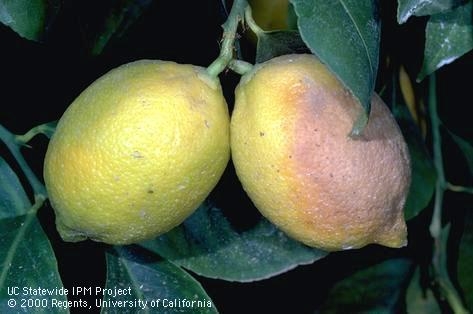
When you're picking citrus fruit that you plan to store for awhile, be careful not to bruise or break the skin. Fruits that are cut or scratched during harvesting will rot fairly quickly in storage. Citrus fruits with perfectly sound skin are fairly decay proof, and will last in cool, moist storage for several weeks (38 to 48 degrees F, 85 to 95 percent relative humidity). Under dry conditions at room temperature, fruits develop off flavors and shrivel within a week to 10 days.
Ed Perry is the emeritus Environmental Horticultural Advisor for University of California Cooperative Extension (UCCE) in Stanislaus County where he worked for over 30 years.
- Author: Anne Schellman
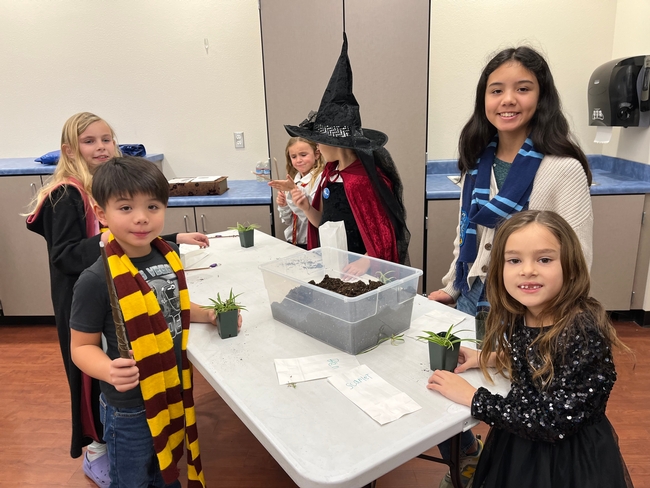
This event was created by Amber O'Brien-VerHulst, Library Assistant for the Modesto Library Teen and Children's Department who did an amazing job! After library staff welcomed in the “Hogwarts students,” they were “sorted” into their respective houses of Gryffindor, Slytherin, Ravenclaw, or Hufflepuff. Next, the students had the opportunity to: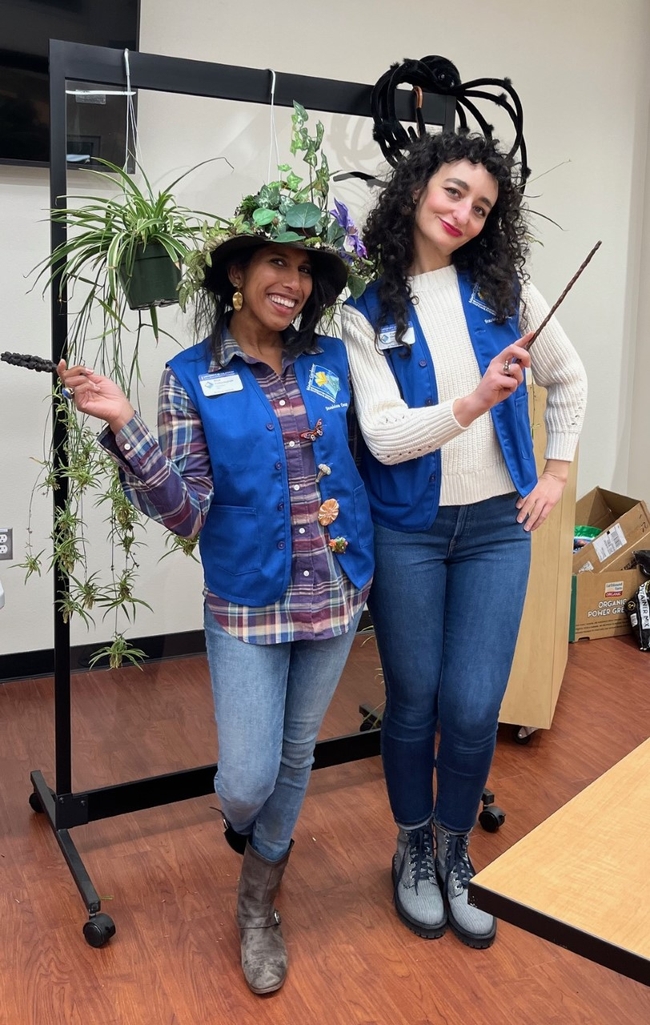
- Make a “Rememberall”
- Visit the Room of Requirements
- Take an “Herbology” class with UC Cooperative Extension Master Gardener volunteers
In the second Harry Potter book called “The Chamber of Secrets,” Harry and his friends take a class called “Herbology.” During one class, their assignment is to repot a magical creature called a mandrake. This plant resembles a small, grouchy baby and has an earsplitting, dangerous scream.
In our Herbology class, the students safely repotted “Aragog's grandbabies,” which were actually spider plants. In the story, Aragog was a very large spider that Harry and Ron met, so we thought these plants were an appropriate choice for the activity. Kids of all ages enjoyed learning about spider plants, naming their spider, and planting it in a pot to take home. Special thanks to MJC nursery for donating the plants!
Speaking of plants, did you know you can study horticultural science in Modesto?
To learn more, stop by the MJC east campus Environmental Horticulture Department to see the classrooms and inviting study lounge, https://www.mjc.edu/instruction/agens/ehs.php and then visit the MJC Nursery and purchase affordable plants grown by students. To learn more, visit their Facebook page at. https://www.facebook.com/MjcPlantNursery/ 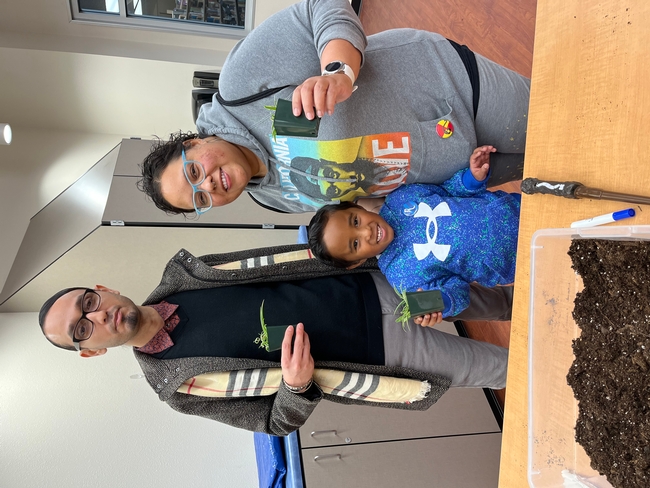
In closing, if you haven't been to the library lately, winter is a great time to snuggle up with a good book! If you don't have a library card, apply for one at a local branch (there are 11!) in Stanislaus County. Check the website for hours and locations at https://www.stanislauslibrary.org/.
- Author: Anne Schellman
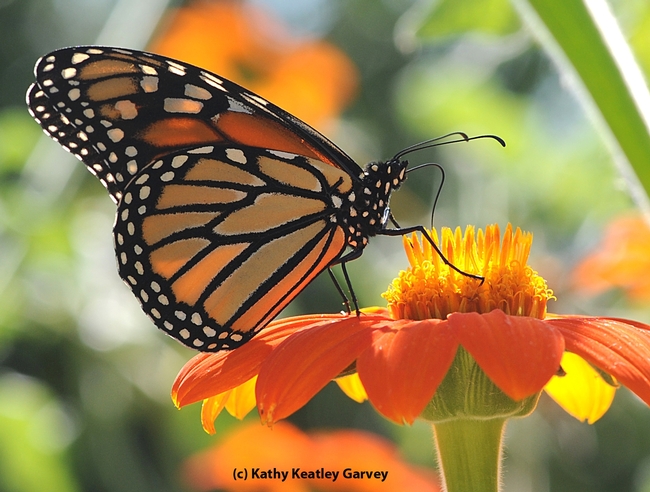
Date: Tuesday, December 20, 2022
Time: 9:00 am – 10:30 am.
Where: Online
Register: https://ucanr.edu/monarchs/2022/online
Link: you'll be sent a link to log in with before the class.
Registration will close Tuesday, Dec 20 at 8:00 a.m.
Can't tune in live? Watch the recording the following week on our YouTube Channel.

